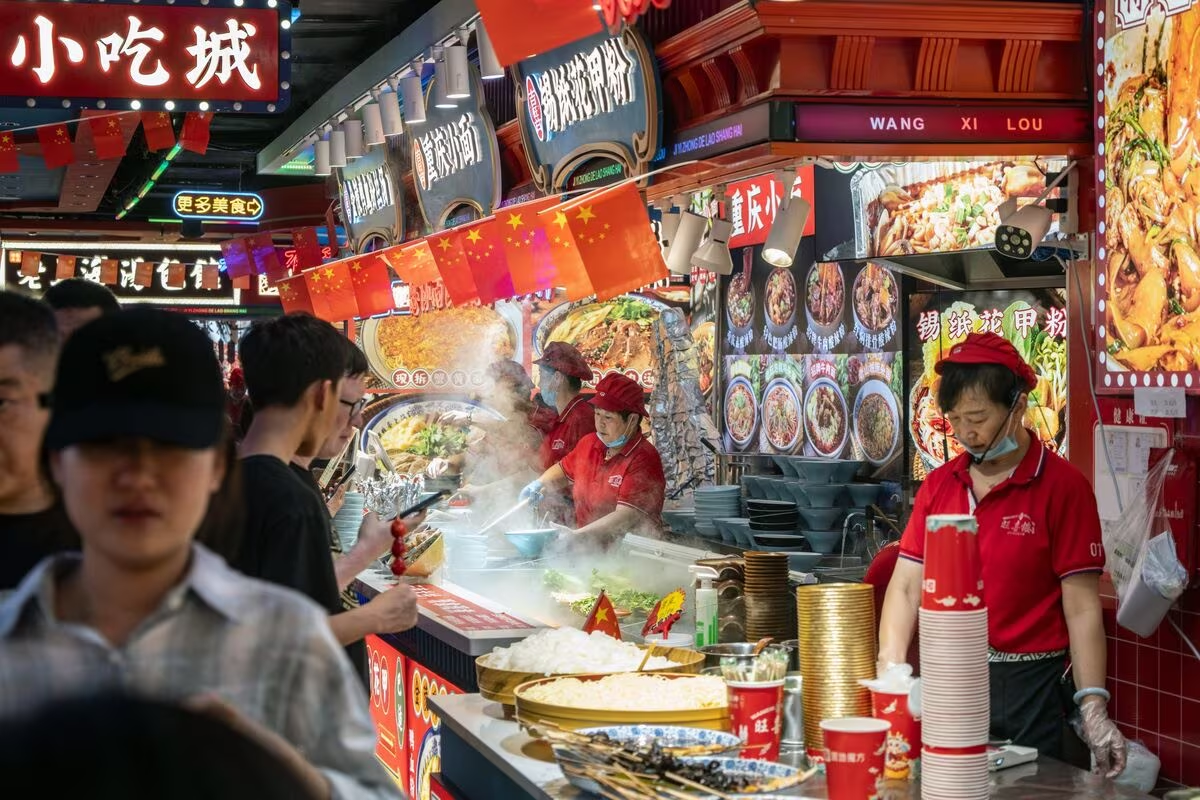Temporary Relief: Holiday Spending Pushes China’s CPI Higher
China’s consumer price index (CPI) registered an unexpected increase in October 2025, marking a brief reversal of the persistent deflationary pressures that have plagued the world’s second-largest economy. The modest rise was primarily attributed to a surge in seasonal demand for travel, food, and transport during the national holidays, providing a temporary boost to consumer spending.
While the increase offers a moment of relief for policymakers struggling to stimulate domestic demand, many economists caution that this seasonal spike is likely fleeting. The underlying structural weaknesses—particularly in the property sector and persistently weak consumer confidence—remain the dominant forces shaping China’s economic outlook.
Dissecting the October Data: The Role of Seasonal Factors
The unexpected uptick in the CPI contrasts sharply with market expectations, which had largely forecasted continued stagnation or even a slight decline. This deviation underscores the powerful, albeit temporary, impact of major national celebrations, such as the Golden Week holiday period.
The Holiday Effect: Travel and Food
The primary drivers of the October price increase were concentrated in sectors directly impacted by mass movement and celebration:
- Travel and Tourism: Millions of Chinese citizens traveled domestically during the holidays, driving up prices for airfare, rail tickets, and accommodation. This category saw the most significant price acceleration.
- Food Costs: Increased demand for fresh produce, meat, and dining out during family gatherings pushed food prices higher, a typical seasonal pattern that is amplified during major holidays.
- Transport Services: Higher fuel consumption and increased demand for ride-sharing and public transport contributed to the overall rise in the transport component of the CPI.
This pattern suggests the price movement was a demand-side shock specific to the holiday calendar, rather than a sign of fundamentally strengthening consumer purchasing power or broad economic recovery.

Contextualizing the Rise: China’s Deflationary Battle
To understand the significance of the October CPI rise, it must be viewed against the backdrop of China’s ongoing struggle against deflation. For the better part of the past year, China has grappled with prices hovering near or below zero, a phenomenon rarely seen in major global economies.
Why Deflation is a Concern
Deflation—a sustained decrease in the general price level—is a major threat to economic stability. It encourages consumers and businesses to postpone purchases, anticipating lower prices in the future. This delay reduces current demand, slows production, and increases the real burden of debt, creating a vicious cycle of economic stagnation.
Crucially, the core CPI—which strips out volatile food and energy prices to reveal underlying demand trends—remains the key metric for economists. While the headline CPI saw a holiday boost, the core CPI figures are expected to show only marginal improvement, if any, reinforcing the view that long-term demand remains weak.
“The October CPI data is a welcome statistical anomaly, but it does not change the narrative,” stated one prominent economist. “We are seeing a seasonal demand spike, not a structural shift. Until we see sustained growth in core inflation, the threat of deflation remains very real.”
The Structural Weakness
The primary drivers of China’s deflationary environment are structural:
- Property Sector Crisis: The prolonged downturn in the real estate market has severely impacted household wealth and confidence, leading to precautionary savings and reduced spending.
- Weak Consumer Confidence: High youth unemployment and uncertainty regarding future income growth have made consumers hesitant to spend on discretionary goods and services.
- Excess Capacity: Manufacturers, particularly in industrial sectors, are producing more than the domestic market can absorb, leading to price wars and downward pressure on producer prices (PPI).

Expert Consensus and Policy Outlook
The consensus among economic analysts is that the October CPI increase is a one-off event that will likely dissipate in the following months as holiday effects fade. This means the pressure on the People’s Bank of China (PBOC) to implement further monetary easing measures remains high.
Policymakers face a delicate balancing act. While they need to inject liquidity and lower borrowing costs to combat deflation, aggressive easing could risk destabilizing the currency or fueling asset bubbles in non-productive areas.
Expected Policy Response
Given the temporary nature of the CPI rise, the PBOC is expected to maintain its current trajectory of targeted stimulus rather than broad, aggressive rate cuts. Potential actions include:
- Targeted Lending: Directing funds toward specific sectors, such as manufacturing upgrades and green technology, to boost industrial investment.
- Fiscal Support: Increased government spending on infrastructure and direct subsidies aimed at boosting household consumption.
- Reserve Requirement Cuts: Lowering the amount of cash banks must hold in reserve to free up capital for lending, though this is often viewed as a last resort.
For the Chinese government, the challenge is shifting focus from supply-side stimulus—which has historically been their preferred method—to demand-side measures that directly address the consumer confidence deficit.
Key Takeaways
For investors and businesses monitoring the Chinese economy, the October CPI data provides critical, if nuanced, insights:
- Unexpected Rise: China’s headline CPI saw an unexpected increase in October 2025, defying deflationary forecasts.
- Seasonal Cause: The rise was almost entirely driven by a seasonal spike in demand for travel, food, and transport during national holidays.
- Fleeting Nature: Economists widely agree that this increase is temporary and does not signal a reversal of the long-term deflationary trend.
- Core Weakness: Underlying consumer demand, as measured by core inflation, remains weak due to low confidence and the ongoing property crisis.
- Policy Pressure: The temporary CPI rise is unlikely to deter the PBOC from pursuing further, targeted stimulus measures to combat structural deflation.
What’s Next
Attention will now turn to the November 2025 CPI release. If prices revert quickly to stagnation or decline, it will confirm the seasonal nature of the October data and intensify calls for more decisive fiscal and monetary intervention from Beijing. The success of China’s economic recovery hinges not on temporary holiday spending, but on the government’s ability to restore long-term confidence among its vast consumer base.
Originally published: November 9, 2025
Editorial note: Our team reviewed and enhanced this coverage with AI-assisted tools and human editing to add helpful context while preserving verified facts and quotations from the original source.
We encourage you to consult the publisher above for the complete report and to reach out if you spot inaccuracies or compliance concerns.

